[View] Brainstorming: Qiu Zhijie and Total Art St
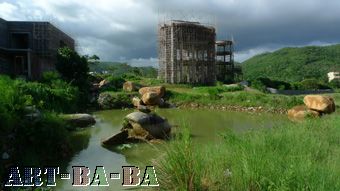
NETHER LAND
ACT VIII of MORALITY, developed by Witte de With Center for Contemporary Art, Rotterdam, for the Dutch Culture Centre, Shanghai, as part of the World Expo 2010.
EXHIBITION
20 June - 11 July 2010, Tuesday to Sunday 11-19
Dutch Culture Centre, 800 Changde Lu, Jing'an District, Shanghai
www.2010dcc.com
SPECIAL EVENTS
Saturday 19 June
14:30 Press Preview / Public Roundtable with select artists moderated by the curators
16:00 Opening Cocktail Reception
Sunday 11 July
13:00 Discussion (in Chinese) with Zheng Guogu, Hu Fang & MadeIn
Every Saturday & Sunday 20 June - 11 July
15:00 Dance Performance, choreographed by nunu kong for Jennifer Tee's new installation Star-Crossed.
As the eighth act of Morality, realized specifically for the 'world stage' of Shanghai's Expo, Nether Land highlights diverse international artistic practices that engage with the paradoxes of cross-cultural perception and fantasies of foreign and alternative production.
Resonating with the name of the exhibition venue, the Dutch Culture Centre, the exhibition title Nether Land is a more exact and deadpan English iteration of the Dutch word for its nation, 'Nederland.' The isolation of the word 'nether' points to its double meaning, as both low (hence the 'Low Countries') and remote (as in 'the nether reaches of the universe'). The echo in Nether Land of the idealized 'Neverland' of Peter Pan is not lost, and many of the works in the show explore the idea of a better life elsewhere. More important still is the Chinese translation of the title, He Guo, which emphasizes the questioning tone of the exhibition: He Guo sounds like the beginning of He Lan [Chinese for 'Holland'], it actually means 'What Country?' - a question that destabilizes our sense of place and creates something of a parallax effect, where shifting locations and shifting viewpoints contribute to deeper perspective.
Each of the exhibited works in the exhibition projects a different relationship with a far away land - Asia, Africa, Europe and the Middle East - or estranges the here and now, making it impossible for a cumulative portrait of a country or culture to emerge. Nevertheless, the immense impact of such viewing from a distance and across borders on the shaping of aesthetic and political values that underpin contemporary artistic practice in a global arena comes into sharper relief.
Featured artists: Allan Sekula (US), Erik van Lieshout (NL/DE), Jacques de Koning (NL), Jeniffer Tee (NL), Ken Lum (CAN), Lidwien van de Ven (NL/DE), MadeIn (PRC), Meschac Gaba (BEN,NL), Sarah Morris (US), Zheng Guogu (PRC).
Curated by Nicolaus Schafhausen and Monika Szewczyk; assisted by Amira Gad.
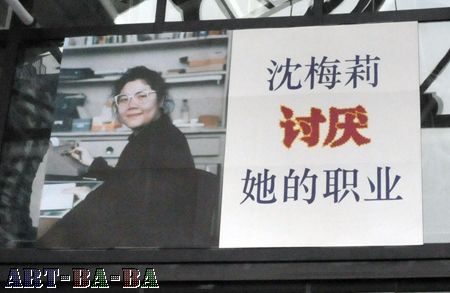
KEN LUM
Melly Shum Hates Her Job (Chinese version for Shanghai) 1990/2010
Inkjet print on canvas billboard
Courtesy of the artist
Melly Shum Hates Her Job is a much-loved, if perplexing, work of public art, which since October of 1990 has greeted passersby on the Witte de Withstraat – the Rotterdam street from which the art center takes its name. Indeed, the billboard has been around for almost as long as Witte de With Center for Contemporary Art itself. Melly, its slyly smiling protagonist, even has a flickr site devoted to her! Perhaps the fact that Melly Shum has become a household name in Rotterdam testifies to this Dutch city’s ethnic diversity – her features and name easily read as Chinese, but it may be important to keep in mind that the artist behind her image is Canadian. Which country does Melly come from? The question may be posed differently in China, or not asked at all, as Melly Shum could indeed be from Shanghai. Perhaps what comes to the foreground instead is Melly's contradictory relationship to her work, an issue which resonates within several artworks to the exhibition which investigate work conditions in highly industrialized nations.
--
Ken Lum (b. 1956) is a Canadian artist of Chinese decent, who lives in Vancouver. He is well known for works that combine image and text, comedy and critique, private sentiment and public modes of display – forging a complex view of multicultural realities. He has exhibited widely including documenta 11 (2002), the 9th Istanbul Biennial (2007) and the 2008 Gwangju Biennale. He is also a respected teacher, a member of juries worldwide and a co-curator of such milestone exhibitions as Shanghai Modern 1919-1945 (with Jo-Anne Birnie Danzker and Zheng Shengtian) and The Short Century: Independence and Liberation Movements in Africa 1945 to 1994 (with Okwui Enwesor). In 2000, he co-founded (with Zheng Shengtian) the Yishu Journal of Contemporary Chinese Art.
ALLAN SEKULA
Eyes Closed Assembly Line, 2010
Plexi-mounted transparency in lightbox
Courtesy the artist and Galerie Michel Rein, Paris

ALLAN SEKULA
This Ain’t China: A Photonovel, 1974
Silver gelatin prints and c-prints on paper, booklets in English and Chinese
Courtesy the artist and Christopher Grimes Gallery, Los Angeles


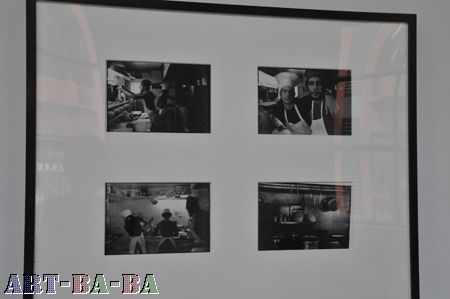
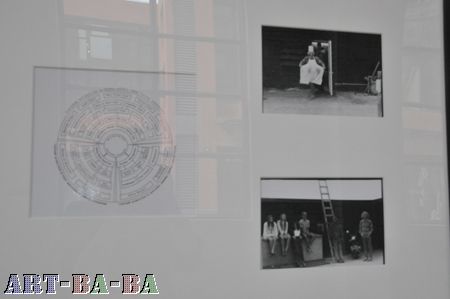

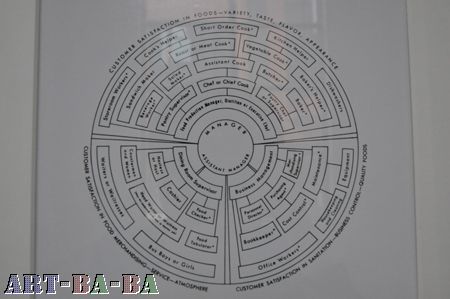


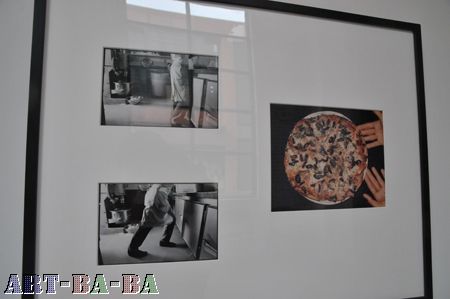
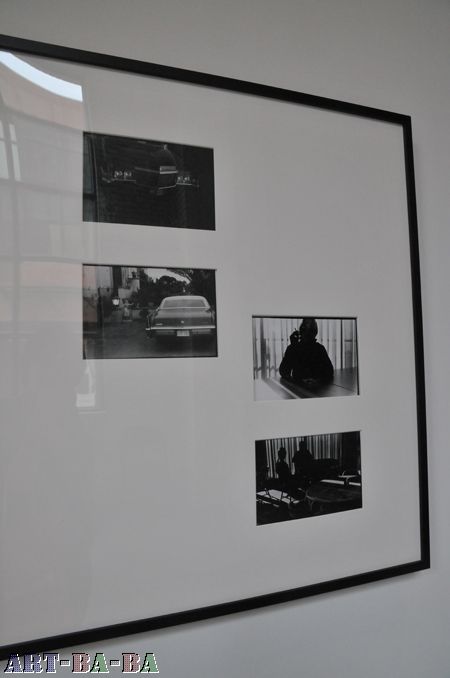
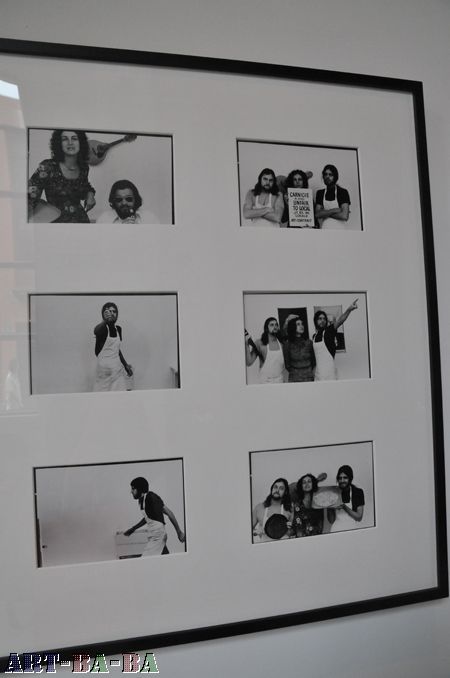
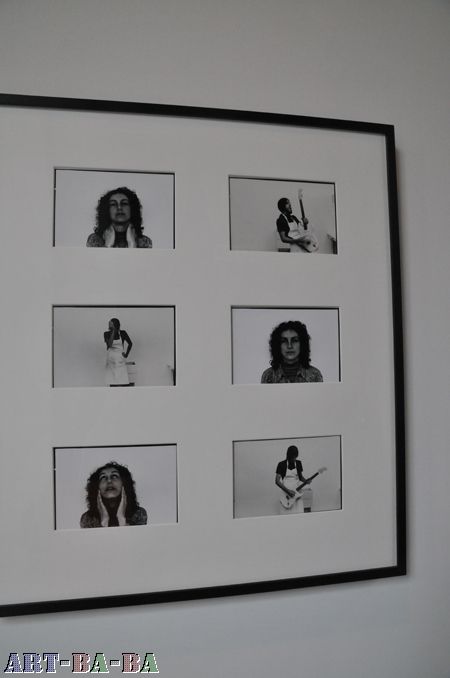
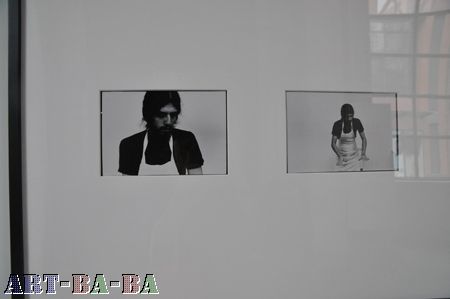
Two works, from two different moments in one artist’s career, testify to an ongoing interest in the changing role of China in the global imaginary. The earlier work, This Ain’t China: A Photonovel was produced in 1974, shortly after Allan Sekula graduated from art school, while he worked in a fast-food restaurant in San Diego. Crucially, the word “China” takes on at least two meanings in the course of the narrative (which accompanies the photographs): China (uppercase C) is the faraway country of the Cultural Revolution that the workers of the piece evoke in contemplating their aspirations; but china (lowercase c) also means fine dinnerware, an example of elegance and high quality craft to which their boss aspires (hence the English term “fine china”). Yet another notion of China may be seen to emerge in the backlit transparency Eyes Closed Assembly Line, an image (seen at the entrance to the Dutch Cultural Center) that Sekula captured very recently, while filming in a kitchenware factory near Guangzhou: the assembly line evokes the new perception of China as a modern, industrialized global producer of just about everything – a world “Made in China.” Within this bustling factory, Sekula isolates a moment of one woman’s concentrated listening; she is closing her eyes so as to better hear any loose parts in the appliance she is assembling. Thus, we may be invited to draw new connections between two seemingly faraway realms: aesthetic production and working life.
--
Allan Sekula (b. 1951) is an American artist based in Los Angeles, whose photographic and writing practice has sustained an insightful critique of economic, social and cultural globalization. He has exhibited extensively, including at documentas 11 and 12 (2002, 2007). Currently a selection of works spanning the artist's career, including early works and a new series, have been brought together in Polonia and Other Fables, which has toured to The Renaissance Society in Chicago; Zacheta National Gallery of Art in Warsaw; and continues to the Museum Ludwig in Budapest and Belfast Exposed. Sekula teaches at CalArts in Los Angeles and lectures internationally.
Eyes Closed Assembly Line, 2010
Plexi-mounted transparency in lightbox
Courtesy the artist and Galerie Michel Rein, Paris
ALLAN SEKULA
This Ain’t China: A Photonovel, 1974
Silver gelatin prints and c-prints on paper, booklets in English and Chinese
Courtesy the artist and Christopher Grimes Gallery, Los Angeles
Two works, from two different moments in one artist’s career, testify to an ongoing interest in the changing role of China in the global imaginary. The earlier work, This Ain’t China: A Photonovel was produced in 1974, shortly after Allan Sekula graduated from art school, while he worked in a fast-food restaurant in San Diego. Crucially, the word “China” takes on at least two meanings in the course of the narrative (which accompanies the photographs): China (uppercase C) is the faraway country of the Cultural Revolution that the workers of the piece evoke in contemplating their aspirations; but china (lowercase c) also means fine dinnerware, an example of elegance and high quality craft to which their boss aspires (hence the English term “fine china”). Yet another notion of China may be seen to emerge in the backlit transparency Eyes Closed Assembly Line, an image (seen at the entrance to the Dutch Cultural Center) that Sekula captured very recently, while filming in a kitchenware factory near Guangzhou: the assembly line evokes the new perception of China as a modern, industrialized global producer of just about everything – a world “Made in China.” Within this bustling factory, Sekula isolates a moment of one woman’s concentrated listening; she is closing her eyes so as to better hear any loose parts in the appliance she is assembling. Thus, we may be invited to draw new connections between two seemingly faraway realms: aesthetic production and working life.
--
Allan Sekula (b. 1951) is an American artist based in Los Angeles, whose photographic and writing practice has sustained an insightful critique of economic, social and cultural globalization. He has exhibited extensively, including at documentas 11 and 12 (2002, 2007). Currently a selection of works spanning the artist's career, including early works and a new series, have been brought together in Polonia and Other Fables, which has toured to The Renaissance Society in Chicago; Zacheta National Gallery of Art in Warsaw; and continues to the Museum Ludwig in Budapest and Belfast Exposed. Sekula teaches at CalArts in Los Angeles and lectures internationally.
ERIK VAN LIESHOUT
Me Power, 2010
Installation with wooden structure, Inkjet prints and 3 min. Blu-ray video
Courtesy of the artist
Erik van Lieshout’s characteristically make-shift sculptural installation with video, engages with one of Rotterdam’s architectural icons who is also a prominent figure in China: Rem Koolhaas. Borrowing the diamond-shaped motif from the façade of Koolhaas’ CCTV tower in Beijing, van Lieshout covers a giant sculpture in the shape of the letters ME. The angles of the ME structure even seem to echo the unusual shape of the CCTV building. Lieshout created this playful form especially for the Nether Land exhibition in Shanghai, having been asked to adapt an earlier version of this work, currently on view at Witte de With in Rotterdam where it is part of the group exhibition Power Alone, which meditates on narcissism as a mechanism of power (the fourth act of Morality). If van Lieshout is bold enough to critique the narcissism of a Dutch architectural star, he is also good-humored enough to implicate himself in this game of self-absorption. In the context of the Nether Land exhibition, which examines projecting and producing “elsewhere,” his work highlights an important question: How much “ME” is involved in building something in a foreign context?
For the past two decades, Erik van Lieshout (b.1968), a Dutch artist based in Rotterdam, The Netherlands and Köln, Germany, has produced ludic and expressive drawing and video installations that have been exhibited internationally, including at the 4[sup]th[/sup] Berlin Biennale and the group exhibitions Satellite of Love (2005) and Tracer (2004) at Witte de With. Van Lieshout often implicates himself in broader social taboos, identifying with protagonists across the cultural and political spectrum. This ever-evolving cultural curiosity has already taken him to Xiamen, China, where he produced the video Fantasy Me (2004), a record of an encounter with a young Chinese woman that tested their difference and mutual projections and attractions.
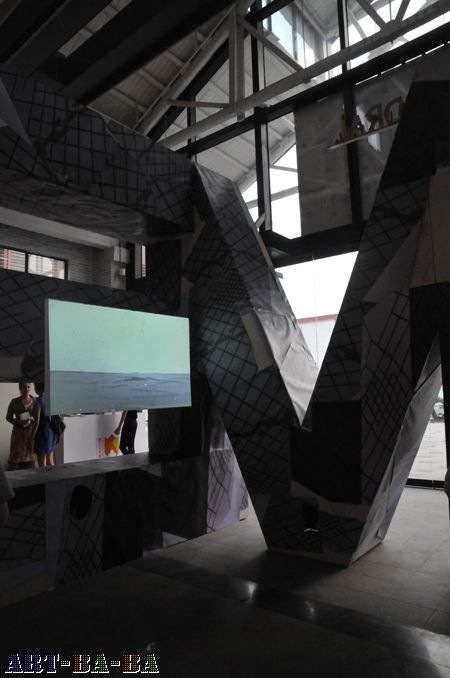
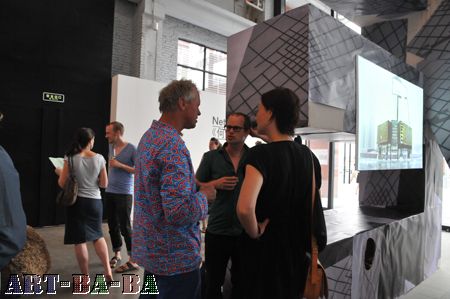
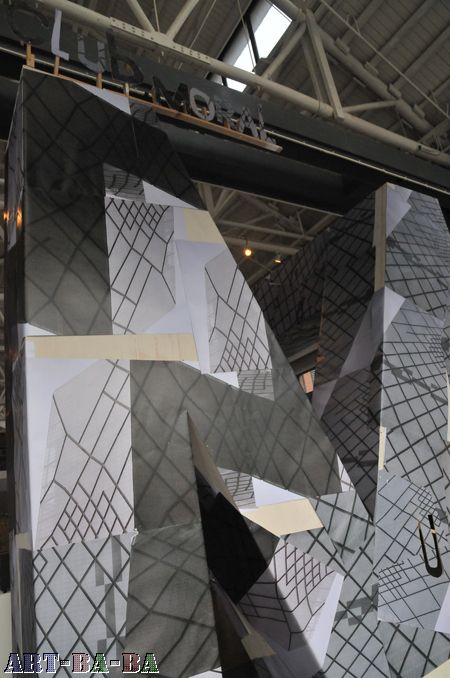
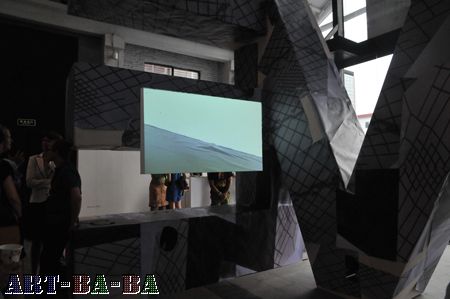


Me Power, 2010
Installation with wooden structure, Inkjet prints and 3 min. Blu-ray video
Courtesy of the artist
Erik van Lieshout’s characteristically make-shift sculptural installation with video, engages with one of Rotterdam’s architectural icons who is also a prominent figure in China: Rem Koolhaas. Borrowing the diamond-shaped motif from the façade of Koolhaas’ CCTV tower in Beijing, van Lieshout covers a giant sculpture in the shape of the letters ME. The angles of the ME structure even seem to echo the unusual shape of the CCTV building. Lieshout created this playful form especially for the Nether Land exhibition in Shanghai, having been asked to adapt an earlier version of this work, currently on view at Witte de With in Rotterdam where it is part of the group exhibition Power Alone, which meditates on narcissism as a mechanism of power (the fourth act of Morality). If van Lieshout is bold enough to critique the narcissism of a Dutch architectural star, he is also good-humored enough to implicate himself in this game of self-absorption. In the context of the Nether Land exhibition, which examines projecting and producing “elsewhere,” his work highlights an important question: How much “ME” is involved in building something in a foreign context?
For the past two decades, Erik van Lieshout (b.1968), a Dutch artist based in Rotterdam, The Netherlands and Köln, Germany, has produced ludic and expressive drawing and video installations that have been exhibited internationally, including at the 4[sup]th[/sup] Berlin Biennale and the group exhibitions Satellite of Love (2005) and Tracer (2004) at Witte de With. Van Lieshout often implicates himself in broader social taboos, identifying with protagonists across the cultural and political spectrum. This ever-evolving cultural curiosity has already taken him to Xiamen, China, where he produced the video Fantasy Me (2004), a record of an encounter with a young Chinese woman that tested their difference and mutual projections and attractions.
ZHENG GUOGU
Barbarous Stone, 2009
Stone, earth and smoke machine
Courtesy the artist and Vitamin Creative Space Beijing/Guangzhou
If Nether Land is a fragment of an entire program that considers question of morality, Zheng Guogu’s Barbarous Stone is one very solid fragment of a project that may occupy the duration of the artist’s life and beyond. Began in 2004, this ongoing adventure involved the purchase of a tract of farmland in Yangjiang, Guangdong Province (pictured on the invitation to this exhibition). Zheng Guogu calls this The Age of Empire, after the eponymous video game, attuning us to the virtual qualities (and real impact) of a transaction that he is still attempting to legalize in a close dialogue with local authorities. As Hu Fang writes: “The Age of Empire comes from the construction of a personal utopia by Chinese artist Zheng Guogu. This garden-style utopia is not an imaginary historical model or a goal of personal desire, but a tangible space for living that can be concretely felt, a space within reality capable of transforming reality. His praxis is to traverse this space with certain sensibilities and perspectives. It is a life experiment in which problems can only be solved by the passage of time, and in which a sense of the work emerges only with time.” It is a challenge to manifest Zheng Guogu’s life/work in a gallery, but the potential of a fragment to resonates with an entire world points at the key questions put in play in the Nether Land exhibition.
--
Zheng Guogu (b. 1970) is a Chinese artist who lives and works in Yangjiang, Guangdong Province. He has exhibited throughout China and internationally, including at the 50th Venice Biennale (2003), documenta 12 and China Welcomes You at the Kunsthaus Graz (both 2007). Currently, his work can also be seen in the survey of the last thirty years of Chinese painting on view at the newly opened Minsheng Art Museum in Shanghai.
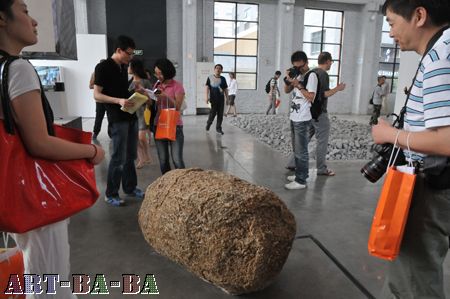
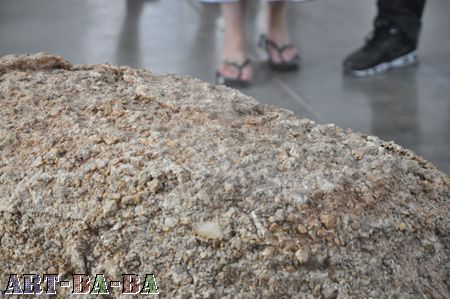
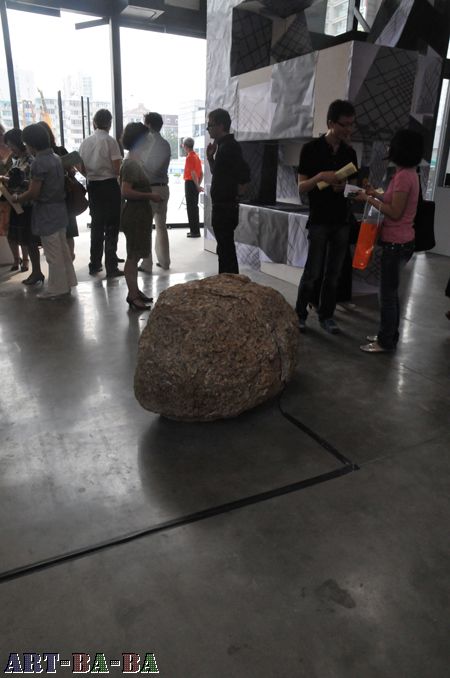

Barbarous Stone, 2009
Stone, earth and smoke machine
Courtesy the artist and Vitamin Creative Space Beijing/Guangzhou
If Nether Land is a fragment of an entire program that considers question of morality, Zheng Guogu’s Barbarous Stone is one very solid fragment of a project that may occupy the duration of the artist’s life and beyond. Began in 2004, this ongoing adventure involved the purchase of a tract of farmland in Yangjiang, Guangdong Province (pictured on the invitation to this exhibition). Zheng Guogu calls this The Age of Empire, after the eponymous video game, attuning us to the virtual qualities (and real impact) of a transaction that he is still attempting to legalize in a close dialogue with local authorities. As Hu Fang writes: “The Age of Empire comes from the construction of a personal utopia by Chinese artist Zheng Guogu. This garden-style utopia is not an imaginary historical model or a goal of personal desire, but a tangible space for living that can be concretely felt, a space within reality capable of transforming reality. His praxis is to traverse this space with certain sensibilities and perspectives. It is a life experiment in which problems can only be solved by the passage of time, and in which a sense of the work emerges only with time.” It is a challenge to manifest Zheng Guogu’s life/work in a gallery, but the potential of a fragment to resonates with an entire world points at the key questions put in play in the Nether Land exhibition.
--
Zheng Guogu (b. 1970) is a Chinese artist who lives and works in Yangjiang, Guangdong Province. He has exhibited throughout China and internationally, including at the 50th Venice Biennale (2003), documenta 12 and China Welcomes You at the Kunsthaus Graz (both 2007). Currently, his work can also be seen in the survey of the last thirty years of Chinese painting on view at the newly opened Minsheng Art Museum in Shanghai.
MadeIn
Calm, 2009
Stones, waterbed, water, protective plastic
Courtesy of the company and ShanghArt, Shanghai
Calm is one of several works of diverse media created for the exhibition Seeing One’s Own Eyes: Contemporary Art from the Middle East, which was curated/created by MadeIn, and which premiered at ShanghArt Gallery in Shanghai in the fall of 2009. Seeing this show inspired the development of the current exhibition, as the paradoxes of cross-cultural perception, which Nether Land attempts to highlight, find strong echoes in MadeIn’s approach. (This is a strategy at the limits of representation shared by several artists in Nether Land, but perhaps especially pertinent to the viewing of the two photographs of the Middle East by Lidwien van de Ven.) The minimal and enigmatic sculptural installation Calm heightens this sense of paradox. Contrary to the work’s title, the animated rubble may be understood to evoke the turbulence of a region plagued by war and conflict. Yet we might also perceive a hopeful tone in Calm, especially when considering how the opportunities of cross-cultural perception are emphasized in MadeIn’s curatorial statement for the Seeing One’s Own Eyes exhibition: “This exhibition is an artistic representation of the multi-aspect situation in the Middle East from a Chinese point of view. Creation of the exhibited works was based on respect, objectivity and strictness. […] The selection was done according to both cultures’ differences, as equal as possible, to reduce misunderstanding and enhance comprehension.”
--
MadeIn (est. 2009) is a company, formed as a platform for artistic production by Xu Zhen (b. 1977) an artist of international acclaim living and working in Shanghai. Xu’s diverse practice has tested the artist’s capacity to formulate alternate modes of production and to rethink artistic, national and moral boundaries. With MadeIn, additional questions of authorship and origin (including the origin of production) are highlighted. Currently, MadeIn’s work is also exhibited in the survey of the last thirty years of Chinese painting on view at the newly opened Minsheng Art Museum in Shanghai.
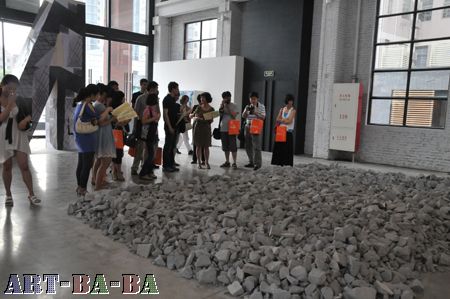
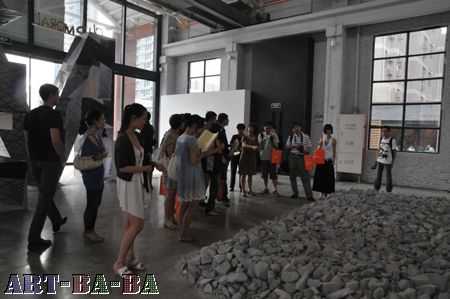
Calm, 2009
Stones, waterbed, water, protective plastic
Courtesy of the company and ShanghArt, Shanghai
Calm is one of several works of diverse media created for the exhibition Seeing One’s Own Eyes: Contemporary Art from the Middle East, which was curated/created by MadeIn, and which premiered at ShanghArt Gallery in Shanghai in the fall of 2009. Seeing this show inspired the development of the current exhibition, as the paradoxes of cross-cultural perception, which Nether Land attempts to highlight, find strong echoes in MadeIn’s approach. (This is a strategy at the limits of representation shared by several artists in Nether Land, but perhaps especially pertinent to the viewing of the two photographs of the Middle East by Lidwien van de Ven.) The minimal and enigmatic sculptural installation Calm heightens this sense of paradox. Contrary to the work’s title, the animated rubble may be understood to evoke the turbulence of a region plagued by war and conflict. Yet we might also perceive a hopeful tone in Calm, especially when considering how the opportunities of cross-cultural perception are emphasized in MadeIn’s curatorial statement for the Seeing One’s Own Eyes exhibition: “This exhibition is an artistic representation of the multi-aspect situation in the Middle East from a Chinese point of view. Creation of the exhibited works was based on respect, objectivity and strictness. […] The selection was done according to both cultures’ differences, as equal as possible, to reduce misunderstanding and enhance comprehension.”
--
MadeIn (est. 2009) is a company, formed as a platform for artistic production by Xu Zhen (b. 1977) an artist of international acclaim living and working in Shanghai. Xu’s diverse practice has tested the artist’s capacity to formulate alternate modes of production and to rethink artistic, national and moral boundaries. With MadeIn, additional questions of authorship and origin (including the origin of production) are highlighted. Currently, MadeIn’s work is also exhibited in the survey of the last thirty years of Chinese painting on view at the newly opened Minsheng Art Museum in Shanghai.
LIDWIEN VAN DE VEN
Lifta, 15/05/2006 (Jewish Boy)
Inkjet on Blue Back paper glued to wall
Courtesy of the artist
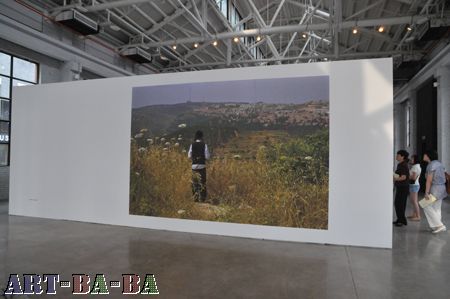
Jerusalem, 24/04/2006 (Memorial Day)
Inkjet on Blue Back paper glued to wall
Courtesy of the artist
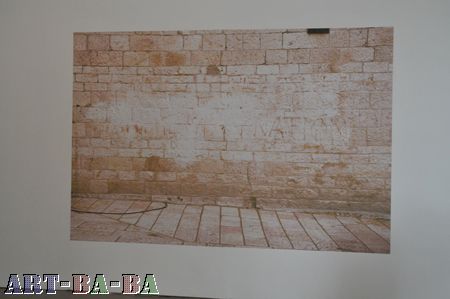
The two images taken by Lidwien van de Ven in the Middle East exemplify how the artist works at the limits of visibility. The captions of both photographs point to facts that cannot be seen. Lifta is the name of an ancient Palestinian village, which was taken over by the Israeli Defence Forces in 1948, but was not settled and remains in ruins. The name is no longer in use. The Memorial Day alluded to in the next photo is the Genocide Memorial Day for the Armenian Genocide of 1915, which falls on April 26th every year. But in 2006 this day coincided with another Memorial Day: the Holocaust Martyrs' and Heroes' Remembrance Day (Yom Hashoah in Hebrew), which is an Israeli national day to commemorate the six million Jews murdered in World War II. The same day, there was also a triple bomb attack in the Egyptian resort town of Dahab, and another memorial may be erected in the memory of the victims. The wall in the image, showing grafitti being painted away, was taken in the Old City of Jerusalem. The only visible word is nation, but we which nation is being called up remains ambiguous.
Lidwien van de Ven (b.1963) is a Dutch artist living and working between Rotterdam and Berlin. Her photo-based work has been exhibited internationally, including Be(coming) Dutch at the Van Abbe Museum in 2008, documeta 12 (2007), the 2006 Sydney Biennale, and Be What You Want But Stay Where You Are at Witte de With (2005). Of course, Van de Ven rarely “stays where she is,” as her work often involves moving abroad to areas which journalists often “cover.” But unlike journalistic photography, her work involves the production of images that signal their status as fragments of the visible truth.
Lifta, 15/05/2006 (Jewish Boy)
Inkjet on Blue Back paper glued to wall
Courtesy of the artist
Jerusalem, 24/04/2006 (Memorial Day)
Inkjet on Blue Back paper glued to wall
Courtesy of the artist
The two images taken by Lidwien van de Ven in the Middle East exemplify how the artist works at the limits of visibility. The captions of both photographs point to facts that cannot be seen. Lifta is the name of an ancient Palestinian village, which was taken over by the Israeli Defence Forces in 1948, but was not settled and remains in ruins. The name is no longer in use. The Memorial Day alluded to in the next photo is the Genocide Memorial Day for the Armenian Genocide of 1915, which falls on April 26th every year. But in 2006 this day coincided with another Memorial Day: the Holocaust Martyrs' and Heroes' Remembrance Day (Yom Hashoah in Hebrew), which is an Israeli national day to commemorate the six million Jews murdered in World War II. The same day, there was also a triple bomb attack in the Egyptian resort town of Dahab, and another memorial may be erected in the memory of the victims. The wall in the image, showing grafitti being painted away, was taken in the Old City of Jerusalem. The only visible word is nation, but we which nation is being called up remains ambiguous.
Lidwien van de Ven (b.1963) is a Dutch artist living and working between Rotterdam and Berlin. Her photo-based work has been exhibited internationally, including Be(coming) Dutch at the Van Abbe Museum in 2008, documeta 12 (2007), the 2006 Sydney Biennale, and Be What You Want But Stay Where You Are at Witte de With (2005). Of course, Van de Ven rarely “stays where she is,” as her work often involves moving abroad to areas which journalists often “cover.” But unlike journalistic photography, her work involves the production of images that signal their status as fragments of the visible truth.
JACQUES DE KONING
I Could Live in Africa, 1983
16mm film transferred to DVD, 21 min.
Courtesy of the artist
Jacques de Koning traveled to Poland in 1982 after the imposition of martial law and encountered an underground punk and reggae scene full of dreams for a better life. One band, formed by Robert Brylewski and Pawel Kelner (who called themselves Izrael, in opposition to the anti-semitism they found around them), became the subject of de Koning’s poetic documentary. The film’s title – which is borrowed from one of the band’s best-known songs – expresses the longing for a faraway continent that none of the protagonists have visited. It also announces an unlikely openness to the world and an optimism about freedom of movement in the face of an increasingly difficult political situation. De Koning captures the stark contrast between the young men’s aspirations and their actuality: Poland’s proverbial and real winter on the one hand; the fantasy of Africa as sun, rhythm and the easy life on the other. Earlier this year, the film also lent its title to an exhibition on the Polish Punk scene organized at Witte de With, which became the fifth act of Morality.
--
Jacques de Koning (b. 1956) is a Dutch screenwriter and filmmaker who lives and works in Amsterdam. He studied Public Administration at the Technical University of Twente, Psychology at the University of Amsterdam and went on to graduate from the Dutch Film and Television Academy in 1984. Himself a member of the reggae band High Live and the punk band TOP DOG (1978-1982), de Koning’s early documentary work reflected this interest and he also produced the documenary Punk in Poland in 1985 for IKON TV. He has continued to combine documentary filmmaking and music making, among other projects managing SeneMali an 8-piece band from Senegal Africa. Recent projects include the animated film Hufter (2010), a social commentary on life in the Netherlands.
MESHAC GABA
Works from the series Tresses including:
Gaba Studio Building, Rotterdam, 2008
L’étoile rouge, Cotonou, Benin, 2008
Disa Park, Cape Town, South Africa, 2007
Gherkin Building, London, United Kingdom, 2008
Château d'Eau, Cotonou, Benin, 2008
All Collection of Museum voor Moderne Kunst Arnhem, The Netherlands
With great humor and material dexterity, Meschac Gaba creates sculptural installations that engage with the nomadic conditions of the (art) world. Especially pronounced is the impact of diasporas. If the artist’s background leads us to consider specifically the changing position of Africans in Europe, Gaba may be seeking to explore a more general sense of people (especially artists) who somehow have to carry their homes with them. For Nether Land, we have chosen to exhibit a selections of Gaba’s Tresses (begun in 2007). These braided head-dresses are produced by a team of skilled craftswomen in Contou, Benin. Using traditional methods, Gaba arrives at wholly original forms: buildings on the move! The portability and animation of the most stable of human creations – architecture – is highlighted in the accompanying video, produced during a public performance of the Tresses in Paris, France. It begs the question: How much can be transported between places and cultures?
--
Meschac Gaba (b. 1961) is a Beninese artist based in Cotonou, Benin and Rotterdam, The Netherlands. He is well known for his Museum of Contemporary African Art, 1997-2002, which comprised twelve “rooms” of diverse purpose that moved to various institutions in Belgium, Egypt, France, Italy, The Netherlands (among others) and culminated with a presentation at documenta 11 in Kassel, Germany [2002]. Gaba has exhibited internationally, including solo exhibitions at The Studio Museum in Harlem, New York and inIVA, London, and group exhibitions such as the Sydney Biennale in Australia and the São Paolo Bienal in Brazil (both 2006). His work will be included in this year’s Liverpool Biennial, England.
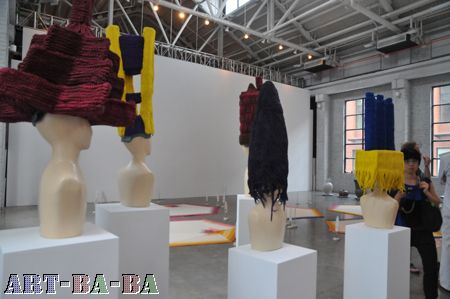

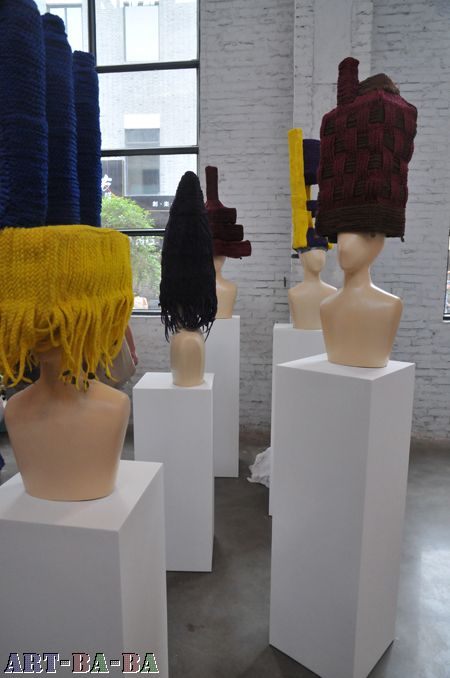

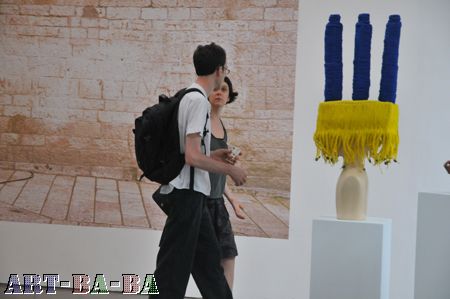
Works from the series Tresses including:
Gaba Studio Building, Rotterdam, 2008
L’étoile rouge, Cotonou, Benin, 2008
Disa Park, Cape Town, South Africa, 2007
Gherkin Building, London, United Kingdom, 2008
Château d'Eau, Cotonou, Benin, 2008
All Collection of Museum voor Moderne Kunst Arnhem, The Netherlands
With great humor and material dexterity, Meschac Gaba creates sculptural installations that engage with the nomadic conditions of the (art) world. Especially pronounced is the impact of diasporas. If the artist’s background leads us to consider specifically the changing position of Africans in Europe, Gaba may be seeking to explore a more general sense of people (especially artists) who somehow have to carry their homes with them. For Nether Land, we have chosen to exhibit a selections of Gaba’s Tresses (begun in 2007). These braided head-dresses are produced by a team of skilled craftswomen in Contou, Benin. Using traditional methods, Gaba arrives at wholly original forms: buildings on the move! The portability and animation of the most stable of human creations – architecture – is highlighted in the accompanying video, produced during a public performance of the Tresses in Paris, France. It begs the question: How much can be transported between places and cultures?
--
Meschac Gaba (b. 1961) is a Beninese artist based in Cotonou, Benin and Rotterdam, The Netherlands. He is well known for his Museum of Contemporary African Art, 1997-2002, which comprised twelve “rooms” of diverse purpose that moved to various institutions in Belgium, Egypt, France, Italy, The Netherlands (among others) and culminated with a presentation at documenta 11 in Kassel, Germany [2002]. Gaba has exhibited internationally, including solo exhibitions at The Studio Museum in Harlem, New York and inIVA, London, and group exhibitions such as the Sydney Biennale in Australia and the São Paolo Bienal in Brazil (both 2006). His work will be included in this year’s Liverpool Biennial, England.
JENNIFER TEE
Star-Crossed, 2010
Installation with ceramics and textiles
Courtesy the artist and the Galerie Fons Welters, Amsterdam. With thanks to the Fonds BKVB.
*****Dance performance every Saturday and Sunday 20 June – 11 July at 3pm.
Jennifer Tee’s Star-Crossed invites poetic association. Consider these words, some of which are stamped on the ceramic vessels distributed throughout her sculptural installation: “secret selves,” “replacing,” “healing,” “inner process,” (wood fired vessels) “recovered memory,” (water jug) “a great miss,” “infinite worlds,” “spiritual retreat,” ruled fate” (jars) “transcend & escape,” “hair, heart, liver, ovary,” “ancestral sacrifice,” and “star crossed” (urns and funerary vases) … The last words come from astrology and refer to the inevitability of paths crossing, on both a human and a more abstract scale, of which the implications are often – but not always - unlucky. Interested in the duality of concepts and forms, Jennifer Tee holds out the possibility of transcending differences and asks us to attend to deeper processes. When we consider how her work was made, a story emerges that weaves together diverse geographies and ancient forms of production: The ceramic vessels and feather forms were produced in Jackson Li’s Sanbao Ceramic Art Institute at Jingdezhen, with the assistance of Min Shen. This is the area most identified with China’s legendary ceramic production or “fine china.” The hexagonal textiles, which may be seen to connect to traditional woven crafts from the Americas, India and Africa, were produced with Sahara Briscoe, a very contemporary craftswoman from the Bronx, New York. The weavings allow the space to blend the functions of sculpture and stage as the five hexagonal forms become the basis for a choreographed routine performed by five women. Tee asked Shanghai-based choreographer nunu kong to develop these poses and postures while reflecting on her poetic phrases, in an attempt to unify the functions of mind, body and spirit. The women’s movements, accompanied by a trumpet improvisation based on Duke Ellington’s The Star-Crossed Lovers (1967), are as modern as jazz. But they also connect to the Taoist treatment of objects both as everyday useable things and as highly symbolic forms, or companions in daily ritual.
---
Amsterdam-based artist Jennifer Tee (b. 1973) creates symbolic, synthetic, even fantastic sculptural installations that the visitor can contemplate, but also sometimes enter or engage with ritually. Her works often balance seemingly contradictory factors: great sculptural sophistication with a transparency in production; the interest in evoking spiritual realms with active material experimentation. She has exhibited internationally, including at the 2004 São Paolo Bienal in Brazil and the 2006 Gwangju Biennial in Korea and has earned several prestigious prizes including the third prize in the Prix de Rome competition 1999 and the Uriot-prijs, Rijksakademie van Beeldende Kunsten, Amsterdam in 2000-2001, among others. After its premiere in Shanghai, a version Tee’s Star-Crossed travels to Birmingham in the United Kingdom, where it will be exhibited at Eastside Projects.
Star-Crossed, 2010
Installation with ceramics and textiles
Courtesy the artist and the Galerie Fons Welters, Amsterdam. With thanks to the Fonds BKVB.
*****Dance performance every Saturday and Sunday 20 June – 11 July at 3pm.
Jennifer Tee’s Star-Crossed invites poetic association. Consider these words, some of which are stamped on the ceramic vessels distributed throughout her sculptural installation: “secret selves,” “replacing,” “healing,” “inner process,” (wood fired vessels) “recovered memory,” (water jug) “a great miss,” “infinite worlds,” “spiritual retreat,” ruled fate” (jars) “transcend & escape,” “hair, heart, liver, ovary,” “ancestral sacrifice,” and “star crossed” (urns and funerary vases) … The last words come from astrology and refer to the inevitability of paths crossing, on both a human and a more abstract scale, of which the implications are often – but not always - unlucky. Interested in the duality of concepts and forms, Jennifer Tee holds out the possibility of transcending differences and asks us to attend to deeper processes. When we consider how her work was made, a story emerges that weaves together diverse geographies and ancient forms of production: The ceramic vessels and feather forms were produced in Jackson Li’s Sanbao Ceramic Art Institute at Jingdezhen, with the assistance of Min Shen. This is the area most identified with China’s legendary ceramic production or “fine china.” The hexagonal textiles, which may be seen to connect to traditional woven crafts from the Americas, India and Africa, were produced with Sahara Briscoe, a very contemporary craftswoman from the Bronx, New York. The weavings allow the space to blend the functions of sculpture and stage as the five hexagonal forms become the basis for a choreographed routine performed by five women. Tee asked Shanghai-based choreographer nunu kong to develop these poses and postures while reflecting on her poetic phrases, in an attempt to unify the functions of mind, body and spirit. The women’s movements, accompanied by a trumpet improvisation based on Duke Ellington’s The Star-Crossed Lovers (1967), are as modern as jazz. But they also connect to the Taoist treatment of objects both as everyday useable things and as highly symbolic forms, or companions in daily ritual.
---
Amsterdam-based artist Jennifer Tee (b. 1973) creates symbolic, synthetic, even fantastic sculptural installations that the visitor can contemplate, but also sometimes enter or engage with ritually. Her works often balance seemingly contradictory factors: great sculptural sophistication with a transparency in production; the interest in evoking spiritual realms with active material experimentation. She has exhibited internationally, including at the 2004 São Paolo Bienal in Brazil and the 2006 Gwangju Biennial in Korea and has earned several prestigious prizes including the third prize in the Prix de Rome competition 1999 and the Uriot-prijs, Rijksakademie van Beeldende Kunsten, Amsterdam in 2000-2001, among others. After its premiere in Shanghai, a version Tee’s Star-Crossed travels to Birmingham in the United Kingdom, where it will be exhibited at Eastside Projects.
SARAH MORRIS
Beijing, 2008
35mm film transferred for HD projection, 84:47 min
Collection of MMK - Museum für Moderne Kunst, Frankfurt am Main
In 2008 Sarah Morris traveled to Beijing to film the Chinese capital during the 2008 Olympics, a decisive moment when the world gathered there to compete in sports, bringing other forms of competition and displays of power and potential to the surface. The artist gained rare access to the Bird’s Nest stadium alongside international media and went on to combine the surreal images of the opening ceremonies and the games with views of the city’s daily routines amidst unprecedented architectural transformation. Amongst an array of famous figures from the worlds of sport, politics and culture, we glimpse the Dutch architect Rem Koolhaas, depicted from a different perspective than in Eric van Lieshout’s installation. Morris calls her studio and production company Parallax – a term that designates the depth of perspective gained by viewing an object from several positions. Bringing Sarah Morris’ particular observations of Beijing to the 2010 World Expo promises a new angle of reflection on this moment when Shanghai opens its doors to the world.
--
The London- and New York-based American artist Sarah Morris (b. 1967) creates paintings and films in which she traces urban and social topologies, testing the interplay of document and abstraction, truth and fiction. She explores both the psychology of the contemporary city and its architecturally-encoded politics in order to survey how a particular moment can be inscribed and embedded into its visual surfaces. Her work has been exhibited internationally, with recent solo exhibitions at the Museum für Moderne Kunst Frankfurt am Main, Germany and MAMbo—Museo d’Arte Moderna di Bologna, Italy (both 2009). Her film Beijing was also recently presented as part of the very first act of Witte de With’s year-long Morality program, in a group exhibition entitled Beautiful from Every Point of View.
Beijing, 2008
35mm film transferred for HD projection, 84:47 min
Collection of MMK - Museum für Moderne Kunst, Frankfurt am Main
In 2008 Sarah Morris traveled to Beijing to film the Chinese capital during the 2008 Olympics, a decisive moment when the world gathered there to compete in sports, bringing other forms of competition and displays of power and potential to the surface. The artist gained rare access to the Bird’s Nest stadium alongside international media and went on to combine the surreal images of the opening ceremonies and the games with views of the city’s daily routines amidst unprecedented architectural transformation. Amongst an array of famous figures from the worlds of sport, politics and culture, we glimpse the Dutch architect Rem Koolhaas, depicted from a different perspective than in Eric van Lieshout’s installation. Morris calls her studio and production company Parallax – a term that designates the depth of perspective gained by viewing an object from several positions. Bringing Sarah Morris’ particular observations of Beijing to the 2010 World Expo promises a new angle of reflection on this moment when Shanghai opens its doors to the world.
--
The London- and New York-based American artist Sarah Morris (b. 1967) creates paintings and films in which she traces urban and social topologies, testing the interplay of document and abstraction, truth and fiction. She explores both the psychology of the contemporary city and its architecturally-encoded politics in order to survey how a particular moment can be inscribed and embedded into its visual surfaces. Her work has been exhibited internationally, with recent solo exhibitions at the Museum für Moderne Kunst Frankfurt am Main, Germany and MAMbo—Museo d’Arte Moderna di Bologna, Italy (both 2009). Her film Beijing was also recently presented as part of the very first act of Witte de With’s year-long Morality program, in a group exhibition entitled Beautiful from Every Point of View.
Curators: Nicolaus Schafhausen、Monika Szewczyk